StereoPi
Video & Cameras
KiCad
StereoPi
Video & Cameras
KiCad
StereoPi is an open-source stereoscopic camera based on Raspberry Pi. It can capture, save, livestream, and process real-time stereoscopic video and images. StereoPi opens up countless possibilities in robotics, AR/VR, computer vision, drone instrumentation, panoramic video, and more.
Thanks to your support, our previous board, the StereoPi v1, was brought to life. StereoPi v1 helps thousands of makers to do their first steps in stereoscopic photo, video, VR experiments, and run a lot of exciting robotics experiments. Today we are thrilled to introduce an updated version!
You can now power the Stereo Pi v2 the same way as the Raspberry Pi 4! Just connect the USB-C power cable, and it works! Unlike the StereoPi V1 micro-USB connector, the USB-C connector on this new edition supports regular powering.
Both USB-C or JST connectors can be used to power up your StereoPi v2. You can swap them on the go without any work interruptions!
To give you more flexibility with the enclosure design, two pins have been added on the board. You can now use an external switch that you can place anywhere to fit your design! No need to worry about the peak current your switch can handle! A new power management chip, able to commutate up to 4A current, will allow you to use tiny switches intended for an extremely low load!
The optional PoE HAT allows you to power StereoPi 2 over Ethernet. And guess what? The hot-swapped reserved power features will still work – a second power source can be used over the USB-C connector.
For advanced users, we put all I2C camera lines on the board with 0 resistors gaps. This means you can use all the I2C you need for your special sensors. By physically connecting them to the appropriate GPIOs, you have hidden “dev board” features on the StereoPi V2. In addition to I2C, we pulled some other lines too.
With the new SoC module from Broadcom, you have up to twice the speed in your OpenCV Computer Vision and DNN applications! And the fast DDR4 memory will add more speed to your memory-intensive applications (e.g. video capture and processing)
Fast two-band Wi-Fi! No more USB dongle – you have a tested solution with brilliant drivers. Hey, drone makers! Did you know you can use an external antenna now? This is a big deal for your long-range FPV solutions (like WiFibroadcast, OpenHD, etc.)! Ah, and maybe WiFi boosters… You know what we mean, right? ☺
Using the new CM4 wireless management features, you can physically power down your WiFi or Bluetooth through the software! Thanks to multifunctional GPIOs, introduced with the CM4, you can both power on/ off onboard wireless devices, and indicate their status by LED.
Thanks to the dedicated 1Gbit ethernet on the new Compute Module 4, there is no more compromise between the USB speed and Ethernet bandwidth!
All your project ideas for Bluetooth remote control can come true!
If you plan to use the StereoPi in industrial solutions, you can choose the eMMC equipped Compute Module 4. This fast and reliable storage is available with 8, 16, or 32Gb options!
A lot of StereoPi users assembled their portable stereoscopic cameras. Thus we decided to create a Camera Kit! In this Kit, we took into account all customer requests from the v1:
You might know that using built-in Raspberry OS tools, you can capture stereoscopic photos easily. Here how you can get 28 Mpix stereoscopic photo using two Raspberry HQ cameras:
raspistill -3d sbs -w 8112 -h 3040 -o hq_photo.jpg
Command line is suitable for on-table experiments. But in the field, it’s not the best way to take a photo, keeping in mind a few dozens of possible camera settings. That’s why we created a particular RaspiOS version, SLP 2 (StereoPi Livestream Playground 2), which allows you to manage your camera easily!
It is equipped with all features you need for stereoscopic photos and videos.
Did you know each 16mm lens for the HQ camera weights 175 grams? You need a robust housing to keep both cameras’ optics stable! Plastic does not works there, so we crafted a special alumina housing. Optic is screwed in the metal base, so your camera will keep it’s eyes stable in any movement and shake.
We also developed advanced sensors’ vertical adjustment system. You can align both cameras ideally before taking images or capture a video. This allows you to livestream video directly to VR helmet or share it on YouTube with no post-processing for the camera sensors disposition compensation. You can also share/view captured stereoscopic images without the software postprocessing them!
This HQ housing kit also includes a couple or HOYA CM500 filters. It means you can do non-destructive disassembly of your HQ cameras to use it with our HQ housing. And if you need them in original assembly, spend 5 minutes with a screwdriver, and your cameras are back!
Key features:
Find more details on HQ housing features in our update.
With our new Oculus application, you can live stream 3D video to your helmet! And if you are using extra-wide angle cameras, you can play with the real VR experience for 2x180 video!
Thanks to head tracking, custom shaders, and Unity, you can now look around in VR while your camera is static.
By the way, did you know you can use StereoPi to look inside the VR helmet? Like it is done by Dann Blair in his project:
With SLP2, you can upload your stereoscopic videos to YouTube in a native 3D format. YouTube will automatically recognize this, and after that, you can view it on your mobile phone using the YouTube application in a real 3D SBS format and “cinema” mode:
Look what these drones are doing using StereoPi!
In the related article at Arxiv.org (PDF) MorphEyes team showcase three different applications of such a system for quadrotor navigation:
For such tasks, the top-of-the-notch C code is used. But if you plan to do the first steps in computer vision, we prepared a bunch of Python code examples for you! We are updating our previous code to work faster (even on the previous StereoPi generation), and with the more powerful Compute Module 4, you can achieve even more speed!
StereoPi v2 was tested by the MorphEyes team on their drone. Thanks to CM4, v2 version up to 2.5 times faster than v1!
In addition to our Depth Map tutorials, we added a new example for the Point Cloud generation! You can use it as a stand-alone code or pass this data to ROS to get an occupancy map with Octomap or another library!
This nifty #MacFeeglePrime robot can see this world in stereo! Keegan Neave, the robot author, now enjoying with the remote driving in VR, and also using onboard ROS to help MacFeegle Prime to avoid obstacles. Next plans are adding ROS to Unity (did you know it’s possible?) and run the real mixed reality VR robot with autonomous features using Oculus Quest!
And what is your plan for your robot? :-)
The same camera kit, but without Compute Module 4. There are 32 variants of CM4 available. If you have your own idea of which CM4 modules fits your project better, you can choose this kit!
This is a set of 10 StereoPi v2 boards for those who needs more. You can save a lot on shipping fees if your project needs more boards!
Please note, this kit does not include HQ cameras and lenses.
Find more details on HQ housing features in our update.
This bid includes our tiny (but able) PoE shield for the StereoPi v2. You don’t need any other items or tricks to enable PoE. Just install this board and connect PoE-charged Ethernet cable!
As StereoPi is an open source project, we are planning to release our schematic, like we did it for the first generation of the board.
Here are the sources you can use:
For StereoPi production, we’ll use our reliable full-service contract manufacturer we used for the v1 manufacturing. And for the quality control we are doing "functional tests", i.e. each StereoPi will be turned on with installed CM4, cameras and USB device, and run special Raspberry OS imge with a set of self-tests.
Our plan calls for three stages of production:
Prototyping stage was completed and took 4 months (July 2020 - November 2020) This stage is used to catch all possible hardware bugs, and usually includes a few iterations. All samples are manually soldered, and in this stage we are checking that everything is okay with our schematics, PCB, and components. Luckily we successfully passed this stage (and you can take a look at our blog post about the issues we faced with.)
Pilot run was completed and took 3 weeks ( mid October 2020 - November 2020)
This stage comes right before all batch manufacturing and is intended to test the process we’ll use in the batch manufacturing. On this stage, we are using the same process will be used for batch production, i.e. fully automatical manufacturing using PCBA machines. In the worst case, we would have to make all the PCBs over again with fixes, or buy alternative components if we encounter quality issues.
If we gather many more orders than expected, the production time can be lengthened to accommodate additional batches. Delivery will be carried out as units are produced.
PoE shield process will be done together with the StereoPi production.
HQ housing item manufacturing is our first experience with alumina processing. Thus we decided to use CNC machining for the first batch. We know metal casting can give us lower price for each unit, but only for the quantities more than 10 000 items. If HQ housing (hopefully) be so popular, we’ll change our production approach from CNC to metal casting.
We plan to send all kits and items to backers using Crowd Supply fulfilment services, so parcels will be shipped to backers from Portland, Oregon. Delivery outside the US will incur a surcharge during checkout. For more information, please see Crowd Supply’s guide on ordering, paying, and shipping.
Production: Factory batch production is a difficult challenge and errors can be very costly. Thus, before manufacturing the main batch, we must be sure all aspects of production are double and triple checked. Final PCB drawings, components, assembly procedures, and accessories quality (like cameras) are all tested in close collaboration with our factory before production begins. Our three-stage manufacturing plan is intended to minimize potential errors. If we have any problems in stages one or two, we will take action to mitigate them before moving to the next stage. This might take some additional time and money, but it will be worth avoiding a mistake in the main production batch.
Delivery: We have three steps in delivery. First, there is delivery from the factory and kit components suppliers to our kitting partner in the USA. Second, when all items and kits are assembled and properly marked, we’ll deliver them to Crowd Supply’s warehouse. Third, there is delivery from Crowd Supply’s warehouse to backers. All three steps have potential risks of parcel damage or unexpected delivery delays. We will inform all backers of any delays and what we’re doing to avoid them.
Software: As you know, Raspberry OS supports stereoscopic mode from 2014. This part is polished and working fine, and we are keeping full software compatibility with the original Raspberry Pi. You won’t need to patch a kernel or do some other tricky things to get it to work. But we also have a few special solutions (like SLP RaspiOS image, OpenCV image and Oculus application), which needs to be mass-tested and polished. We are planning to start mass-tests during our crowdfunding campaign to catch and fix all software issues. Luckily, software issues can be solved by simple patch release, unlike hardware issues.
"New board includes a range of improved features, and has a Raspberry Pi Compute Module 4 at its heart."
"The company has designed its new expansion board for the Raspberry Pi Compute Module 4, which also brings a USB Type-C port, two USB Type-A ports and Gigabit Ethernet to the pocket-sized board."
"We realized we could offer the ability to do things like create point clouds within the camera—rather than having to stream images to a more powerful external computer for processing."
"Stereoscopic cam board taps Raspberry Pi CM4."
"It has more power than the previous edition and includes built-in support for both Bluetooth and Wi-Fi."
"[StereoPi V2 will offer] both Bluetooth 5.0 BLE and wireless connectivity as well as an advanced power system."
"Este dispositivo de cámara permite la captura, almacenamiento, emisión en directo (livestream) y procesamiento de vídeo y fotos estereoscópicas en tiempo real."
Produced by StereoPi in St. Petersburg/Moscow, Russia.
Sold and shipped by Crowd Supply.
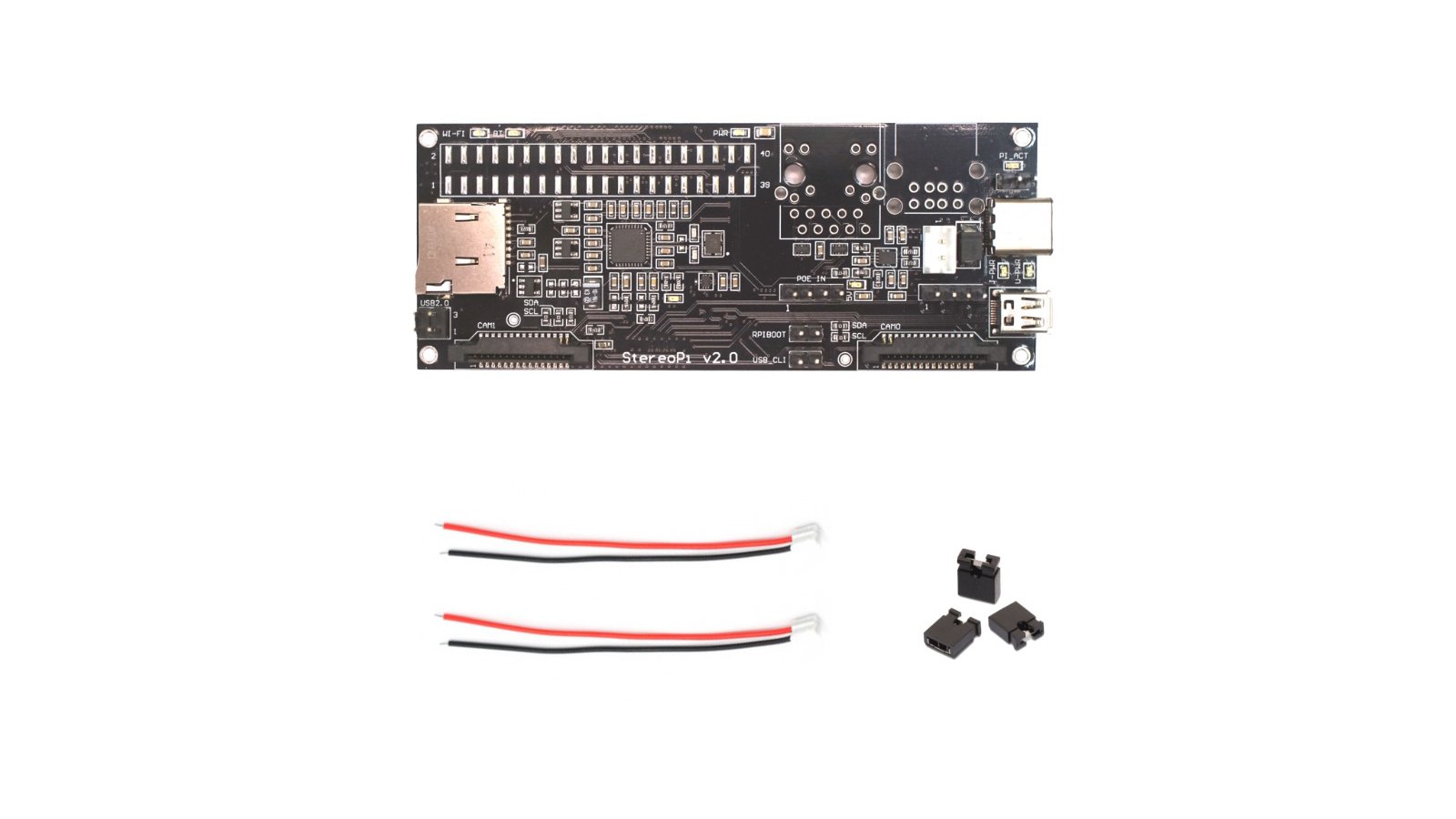
Perfect for DIY ninjas and those wanting to embed StereoPi in a tight space. This board is the same as the standard edition, but without all the bulky connectors - the Ethernet RJ45 jack, GPIO header, and dual USB Type-A connector have not been populated. To use this board, you will need your own Raspberry Pi Compute Module, cameras, and camera ribbon cables. Two short power cables and three jumpers already included.
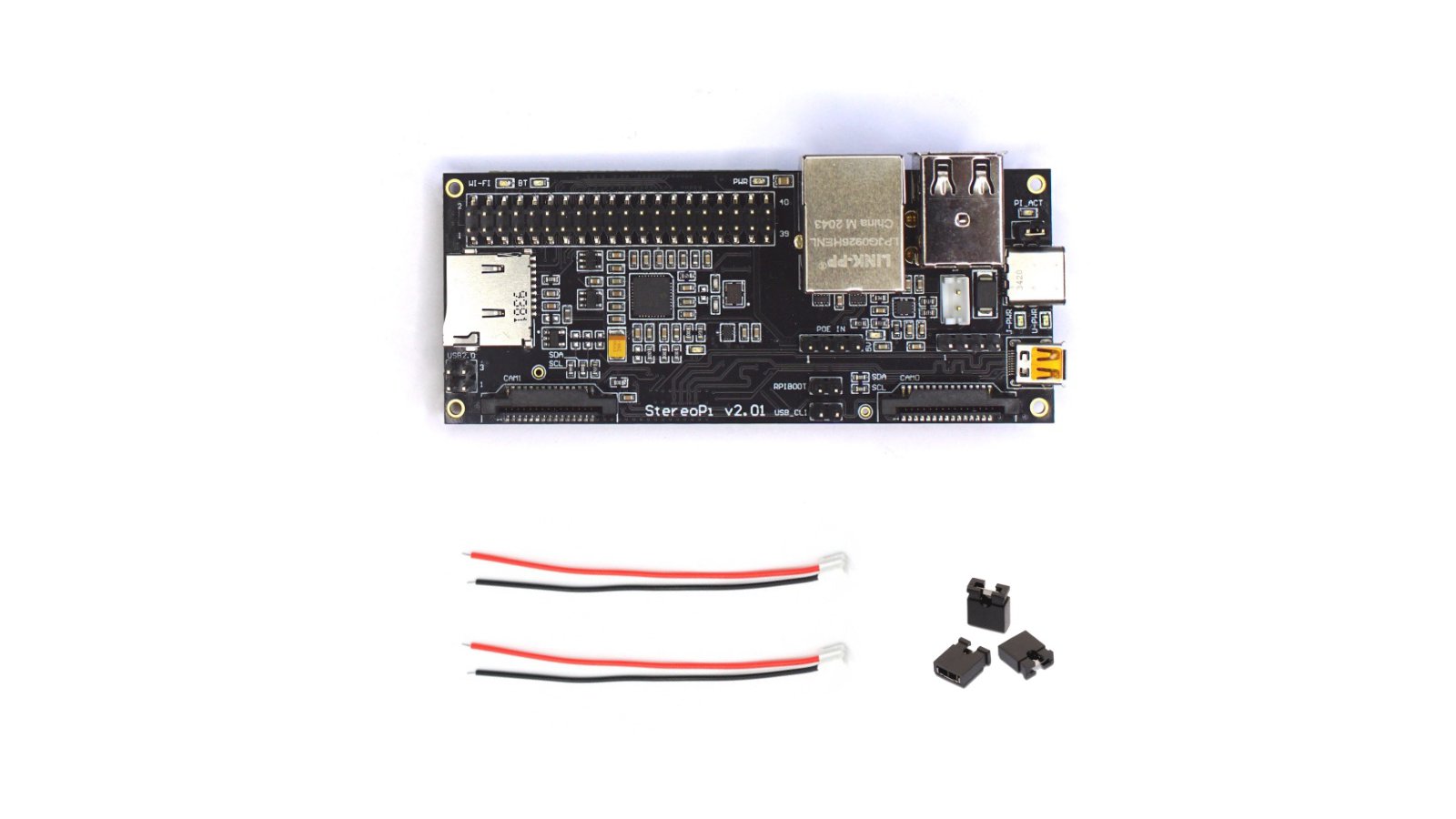
The world of stereoscopic video awaits! This board is the ultimate interface between two cameras and a Raspberry Pi Compute Module. It comes with all the bells and whistles, including Ethernet, dual USB ports, GPIO header, microSD slot, HDMI output, and more. To use this board, you will need your own Raspberry Pi Compute Module, cameras, and camera ribbon cables. Two short power cables and three jumpers already included.
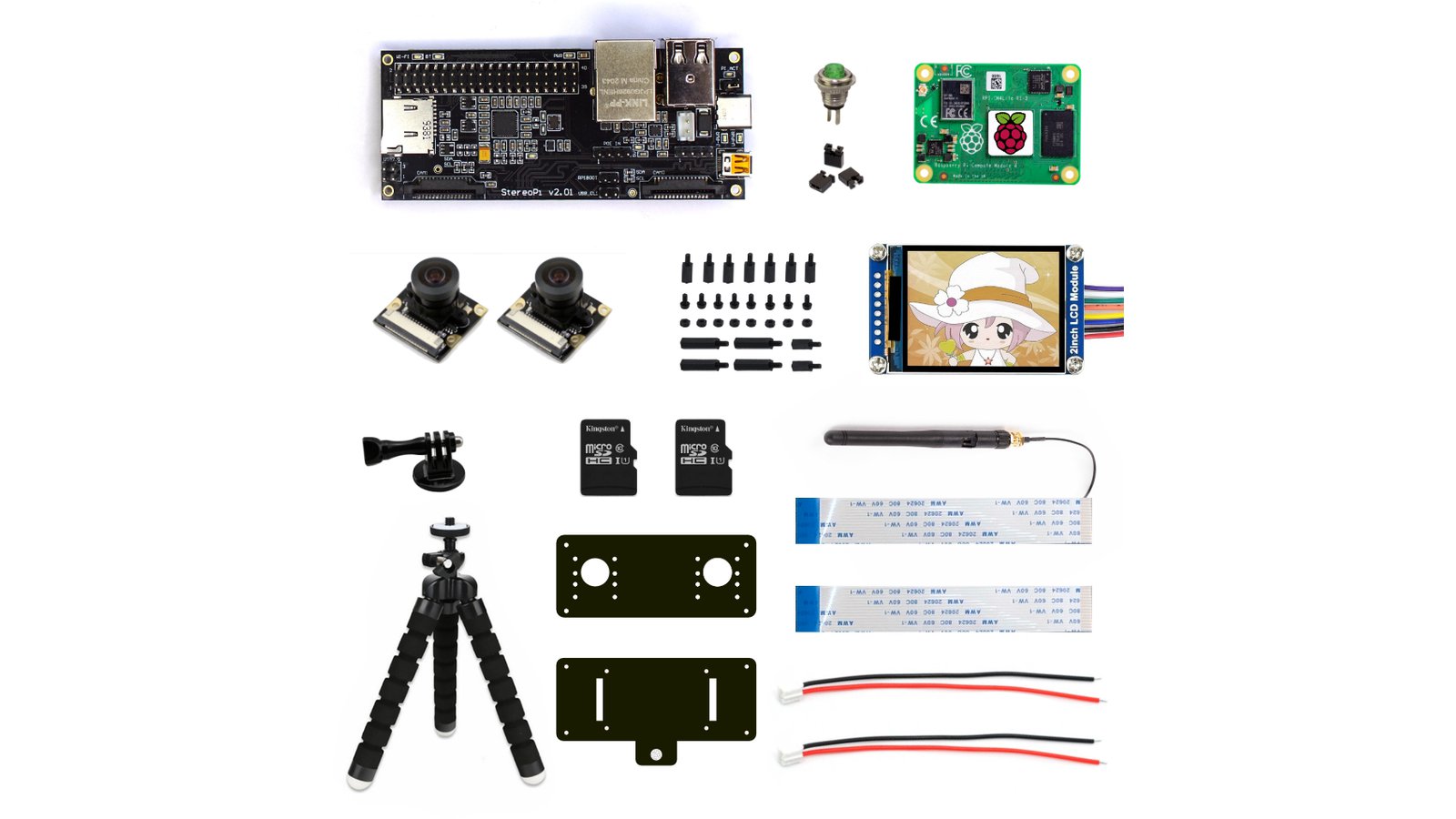
Everything you need to assemble your camera! Includes StereoPi Standard, CM4 + external antenna, 2 cameras (IMX219, 160 FOV), a TFT screen, a shot button, camera-mount plates, nuts & bolts, 3 jumpers, a 15 cm tripod, and 2 microSD cards with pre-written SLP and OpenCV images!
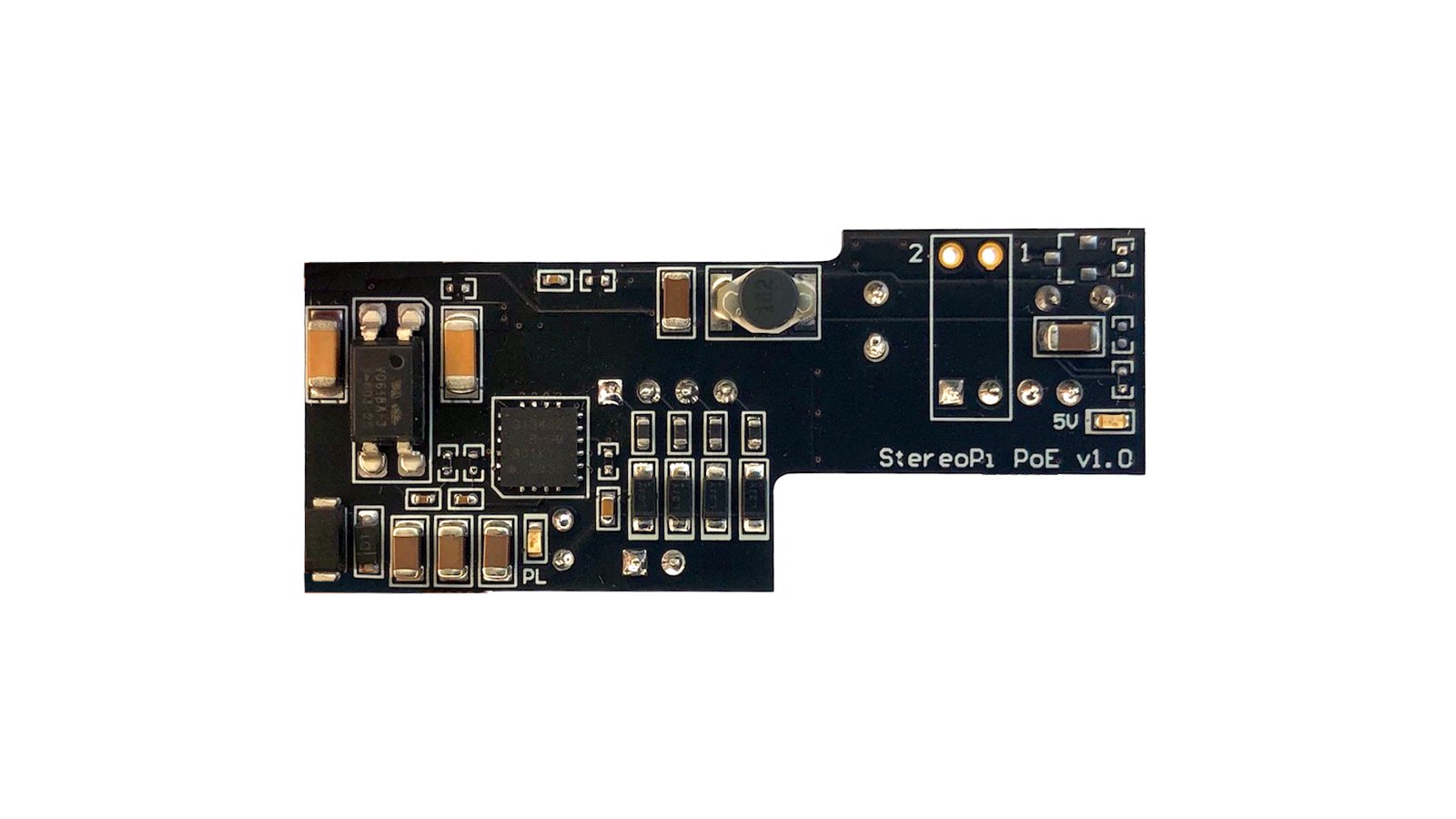
This board adds Power over Ethernet option to your StereoPi
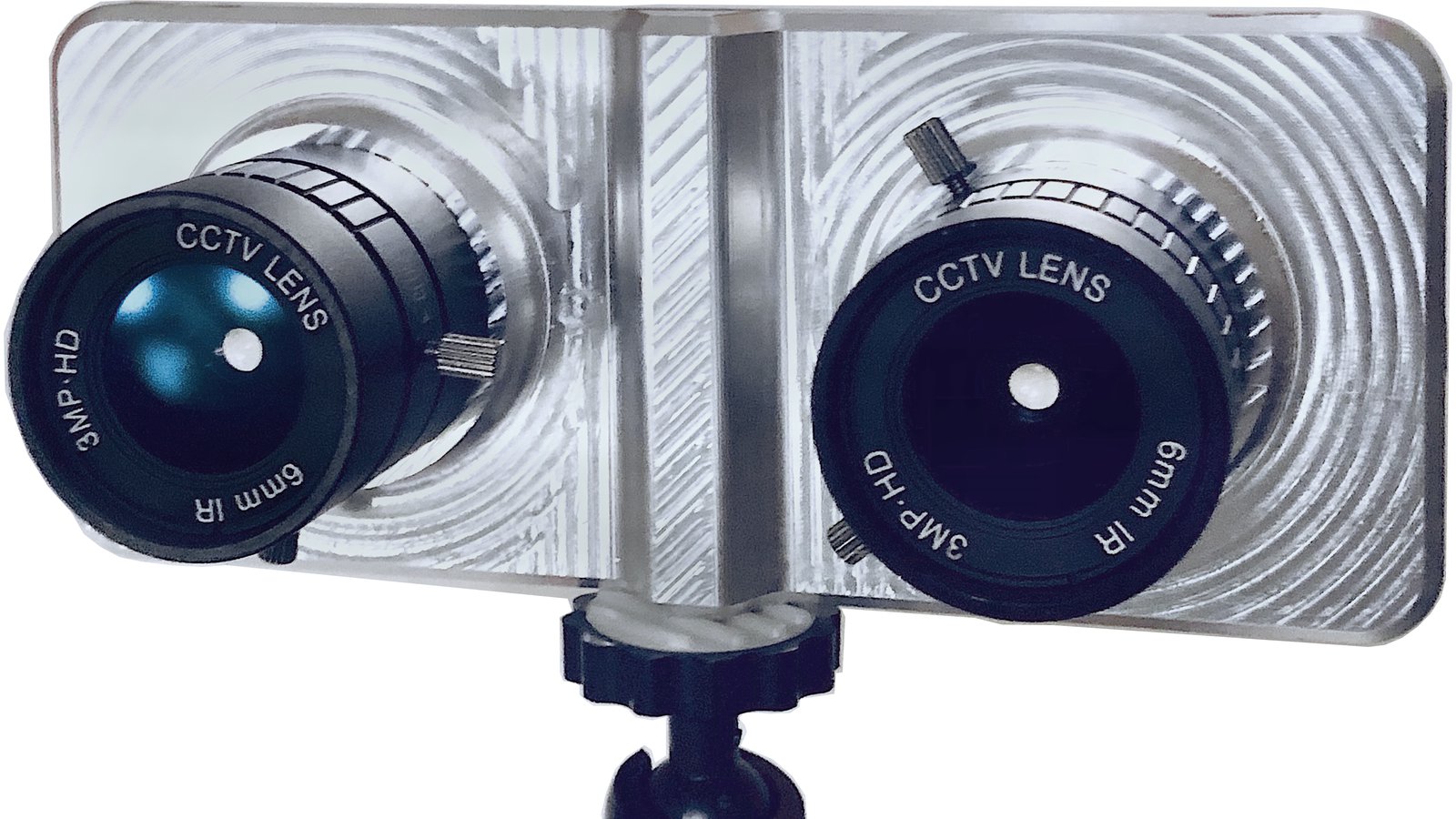
Metal housing for a couple of HQ cameras with advanced adjustments features. Includes StereoPi HQ housing base + carriages, 2 x HOYA CM500 filters (8.9 x 8.9 x 1 mm), a set of nuts/bolts/washers for assembly, and a tripod. To use this kit you need a couple of HQ cameras and a couple of C or CS lenses.
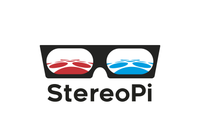
We are a small team of geeks who have been making remote-controlled things with livestreaming video since 2010. We've done everything from boats and planes, to robots, copters, and VR helmets. If we can't find the right tools for our projects, we build them ourselves.
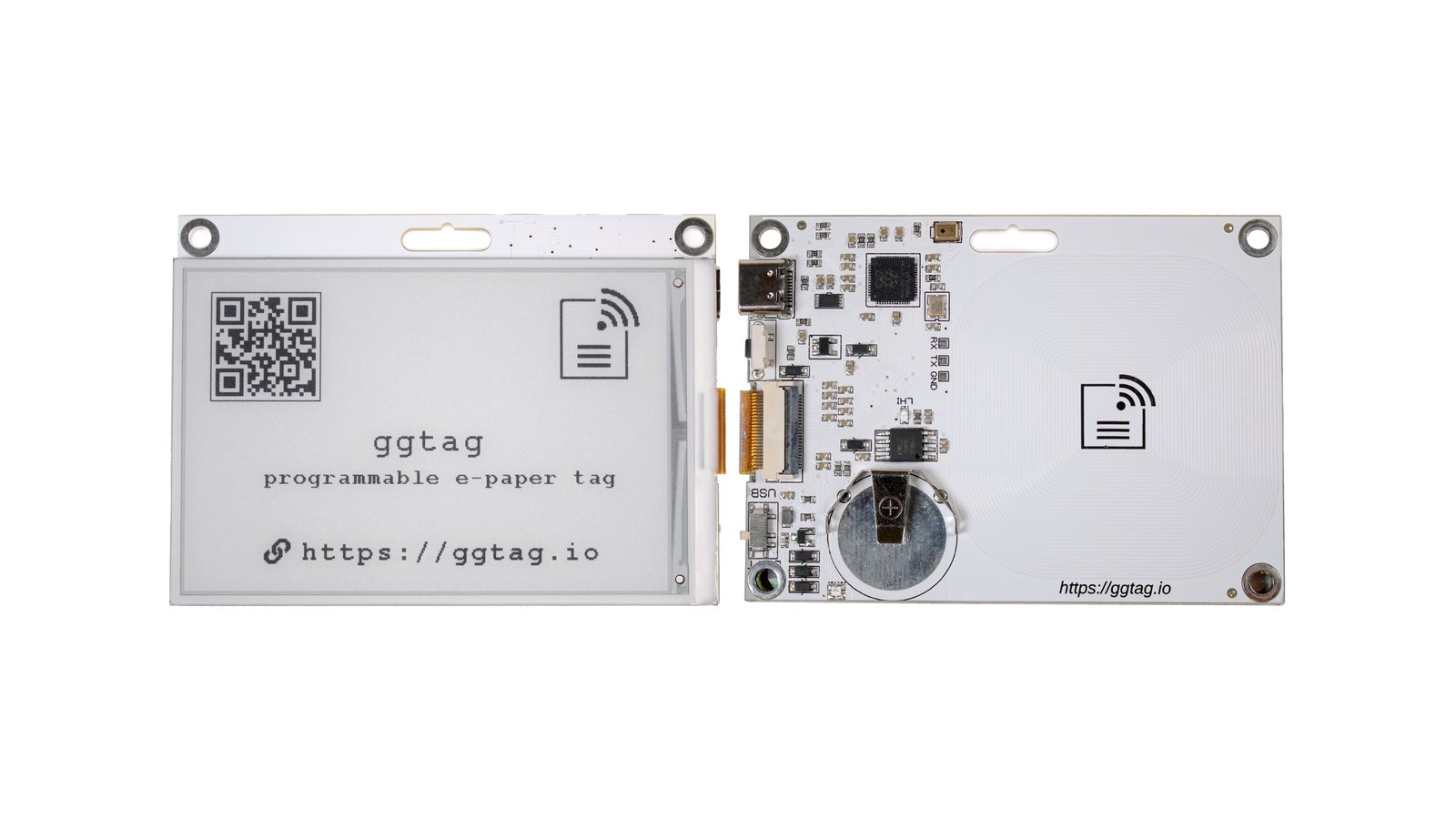
Sound-programmable e-paper badge with USB serial programming and 125 kHz RFID emulation
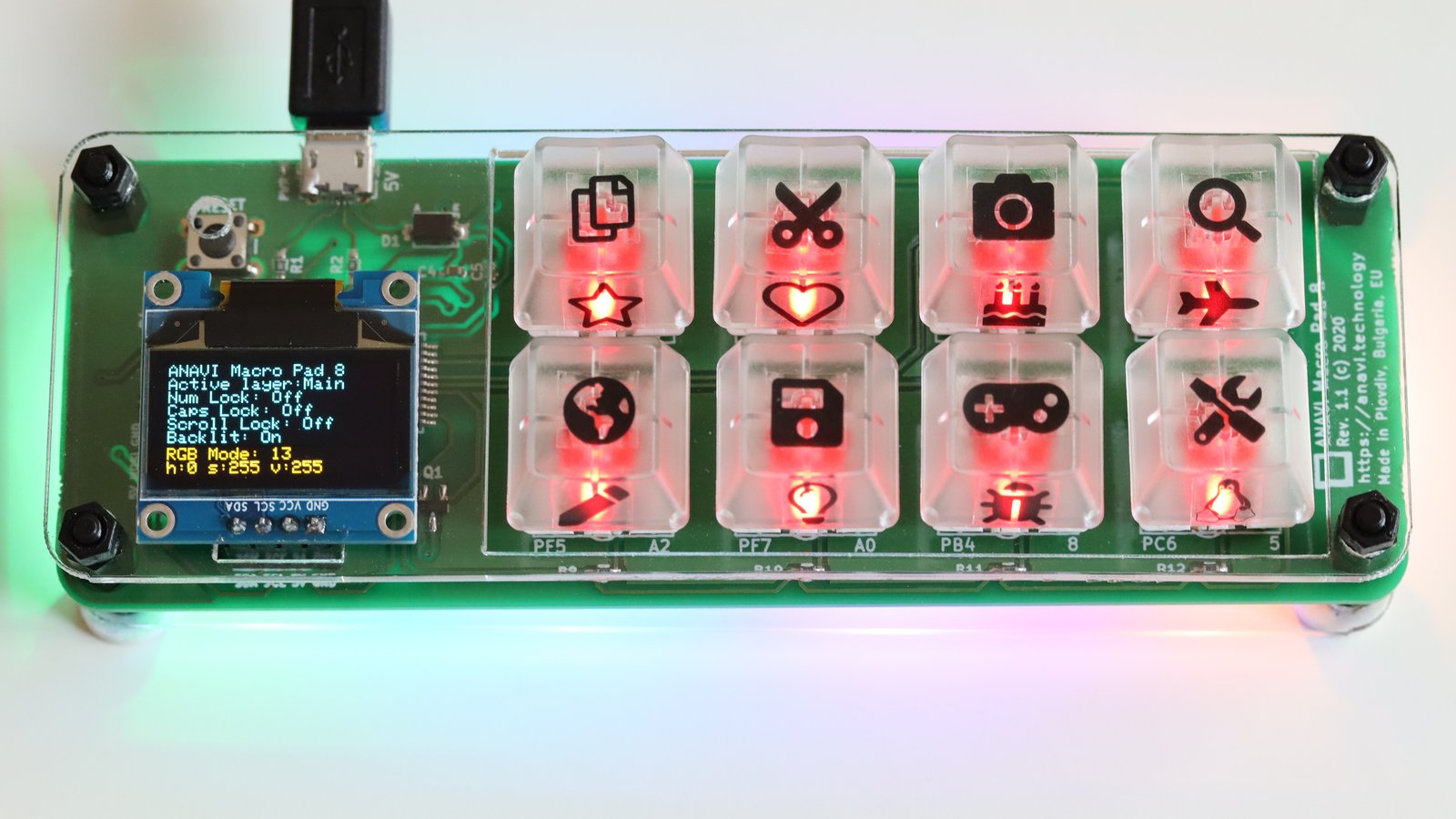
Open source, programmable, eight-key keypad with backlighting, underlighting, and OLED screen
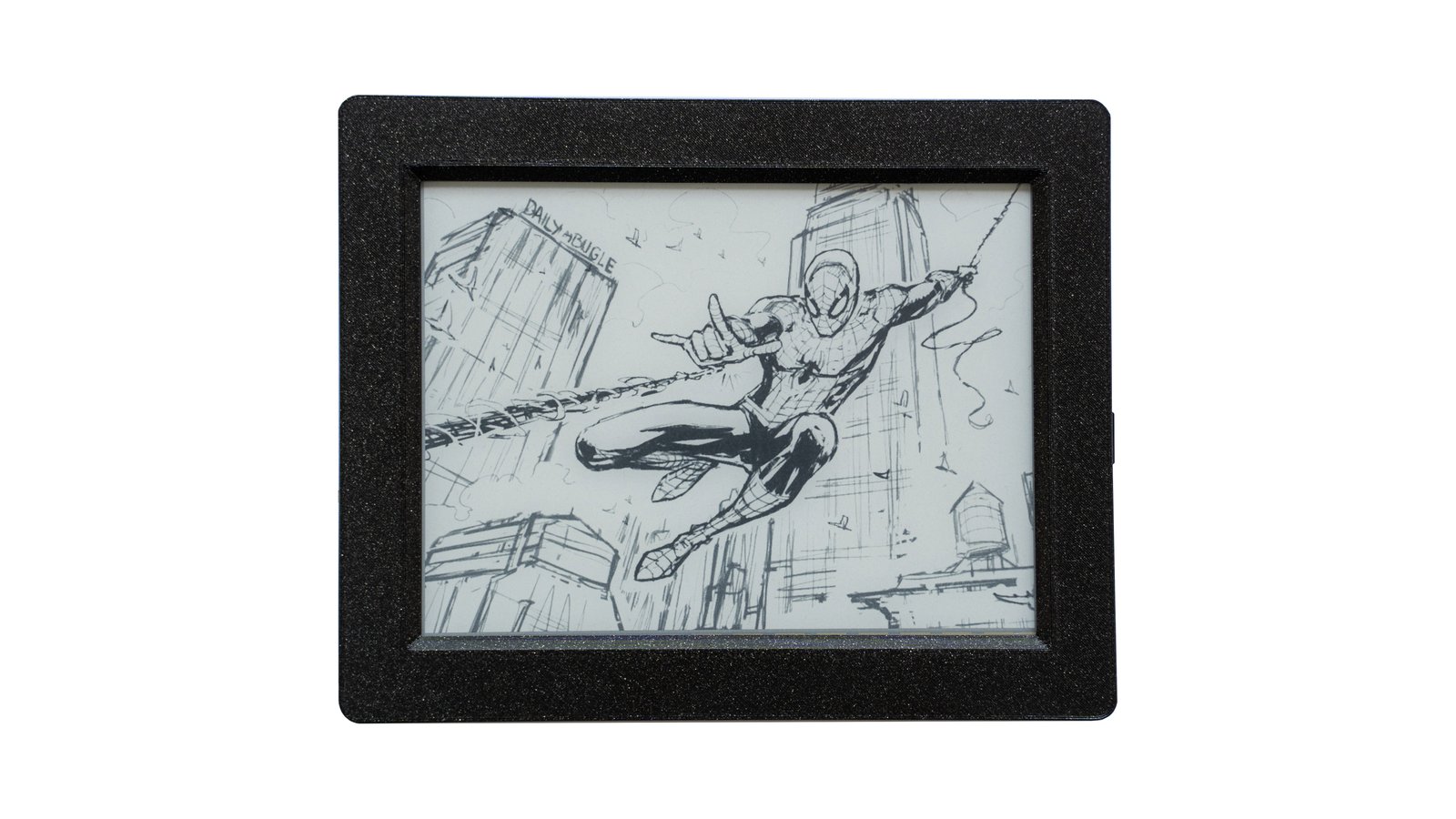
Versatile, easy-to-use, Wi-Fi-enabled 6" e-paper display with a touchscreen and frontlighting